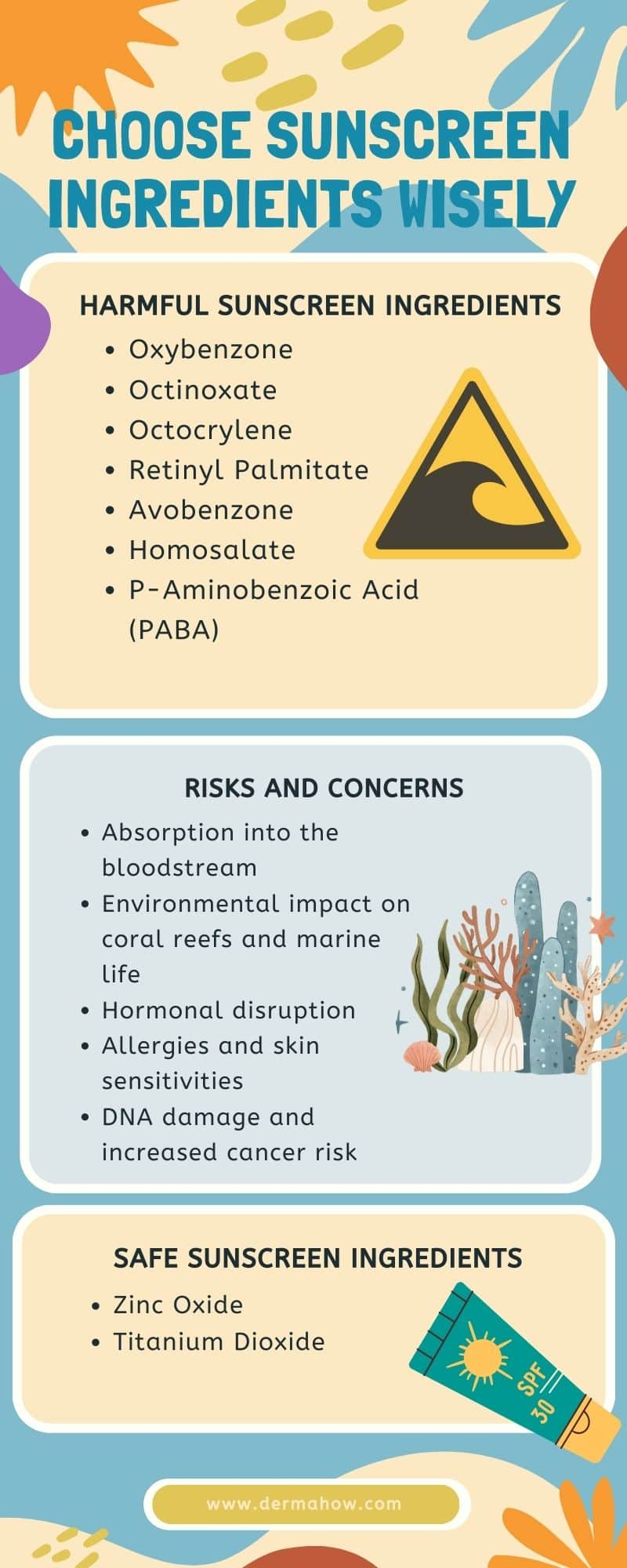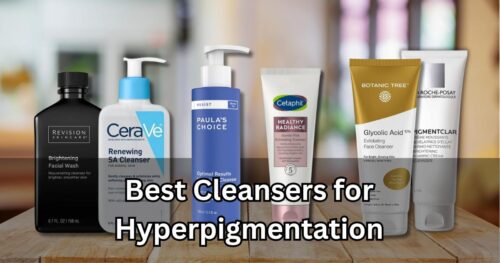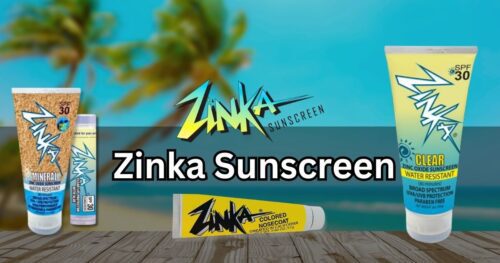The ozone layer around the world helps protect us from the sun’s harmful UV rays. However, with rising environmental hazards, the ozone layer is getting weaker and weaker.
This means more harmful UV radiation can reach the surface of the earth. UV rays damage our DNA and speed up skin aging. They also increase the risk of skin cancer.
Using sunscreen decreases the risk of skin cancer by 50-73%, research says.
Sunscreen is vital in protecting our skin from these dangerous UV rays. But only a handful of sunscreen ingredients are safe for human use.
Table of Contents
What to Look For When Considering Sunscreen Ingredients
A good sunscreen should have ingredients which
- It should not get absorbed into the skin
- Should not damage DNA and skin cells
- Its chemical composition should not change after sunlight exposure to break it down into harmful substances
Common Harmful Sunscreen Ingredient
Oxybenzone (Benzophone-3/BP-3)
Key Points
- Avoid Oxybenzone if possible. If you must use it, choose a product with a 2.2 percent or lower concentration.
- Oxybenzone gets easily absorbed in the blood through the skin, but no harmful effects have been established till now
- It gets removed from the body through urine
- More research is needed to clear out the ambiguity in its effects on the human body
Oxybenzone is the top cause of allergies by sunscreens.
It is a chemical used in sunscreen to filter out the sun’s ultraviolet light.
Besides sunscreens, Oxybenzone is also used in perfumes, lip balms, shampoo, and other cosmetic products.
Oxybenzone gets easily absorbed into the blood resulting in increased levels than the normal safe limit range.
What Research Says
There’s not enough research data to establish all adverse effects on human health. Research has been established so far that
- It has no harmful effect on human fertility hormones, child growth during pregnancy, and child brain growth
- Some effects on thyroid hormone, testosterone level, kidney function, and pubertal timing were observed at high-concentration use during research which calls for additional investigations to confirm its validity.
A study was conducted by NIH and published in the International Journal of Dermatology about harmful sunscreen ingredients,
Within 02 hours of sunscreen application in participants of the research, The levels of Oxybenzone and Octinoxate rose many folds.
The explosive rise of these harmful ingredients in the blood is alarming. Even if we haven’t established their harmful effects completely in humans, we still need to be cautious.
Oxybenzone can react with chlorine (Found in swimming pools) and break down into harmful products.
Oxybenzone Can Cause Intestinal Disease in Newborns
Research has also found that Oxybenzone in mothers can cause a disease of the intestines in newborn babies called Hirschsprung’s disease.
Safe Limit for Oxybenzone
European Commission recommended Oxybenzone to be safe to use in sunscreens at 2.2 percent concentration. The currently allowed limit of 6% by the FDA in sunscreens and other cosmetic products has been pronounced unsafe by SCCS (European Commission) after extensive research.
Octinoxate (OMC)/ Octyl Methoxycinnamate
Like Oxybenzone, Octinoxate also gets absorbed into the blood resulting in increased levels than the normal safe limit range. However, its absorption is lower.
What research says
Scientific and medical research data is insufficient to jump to any conclusions. However, it was established Octinoxate has no harmful effect on thyroid and reproductive hormone levels within the allowed limit used in sunscreens.
The current maximum allowed limit of Octinoxate in sunscreens is 7.5% by FDA.

Octocrylene
This is an organic UV filter. It is absorbed into the skin, blood plasma, and body cells. Its level remains raised in the blood even weeks after its last usage.
It is one of the ingredients that damage coral reefs and marine life.
It is unstable and breaks down into the harmful chemical benzophenone when exposed to sunlight. Benzophenone is a carcinogen and may result in severe health hazards.
Retinyl Palmitate
It is a form of vitamin A which is often used in sunscreens.
Studies have shown that it is unstable, breaks down into harmful substances, and produces free radicals when exposed to sunlight. Free radicals can damage skin cells and increase cancer risk.
Recommendation: Avoid this ingredient.
P-Aminobenzoic Acid (PABA)
PABA is one of the causes of contact allergies by sunscreens.
PABA provides complete UV-B protection. It is also water resistant. It has been used extensively in sunscreens in the past.
However, now research has established it as a potential cancer-causing and allergy-causing agent.
Recommendation: Avoid this ingredient.
Avobenzone
It may cause hormone disturbance and allergies if used at higher concentrations. It may hinder the functions of the testosterone hormone.
It is unstable and may break down into harmful chemicals when exposed to sunlight. That’s why it is mixed with other stabilizer substances like Homosalate.
According to one research, It is not dangerous in sunscreens if its concentration is below 1%.
Concentration above 1% should be avoided.,
Homosalate
It is known to cause hormone disturbance after getting absorbed into the skin if used at high concentrations.
European Commission recommended Homosalate be used in sunscreens at a maximum 0.5 percent concentration. At the same time, FDA has approved Homosalate to be used at 15%.
Recommendation: Avoid this ingredient if its concentration is above 0.5%.
Other Ingredients Which Might be Unsafe
These ingredients don’t have enough data to be labeled as dangerous. Since very few details are known, they should be avoided till safety is established by research data:
- Sulisobenzone
- Padimate O
- Meradimate
- Dioxybenzone
- Ensulizole
- Octisalate
- Homosalate
- Avobenzone
- Cinoxate
What Are the Safe Ingredients to Use in Sunscreen?
The research found that only Zinc Oxide and Titanium Dioxide are safe UV filters to use in sunscreen.
In 2021, Food and Drug Administration (FDA) declared Zinc Oxide and Titanium Dioxide safe for sunscreens use. However, Zinc oxide can be a cancer risk if inhaled. Therefore it should be used only on the skin with caution. Avoid spray sunscreens.
Related: Niacin Sunscreen: 11 Reasons Why You Must Start Using It
FDA Allowed Limits of Sunscreen Ingredients
This table was last updated from FDA data in May 2023. FDA is the Food and Drug regulatory authority that governs the limit of ingredients used in sunscreens and their safety.
Maximum Allowed Percentage is the limit of an active ingredient allowed in the final product. Above this limit, sunscreen is considered unsafe and should be avoided at all costs.
| Active Ingredient | Maximum Allowed Percentage |
|---|---|
| Aminobenzoic acid (PABA) | Up to 15% |
| Avobenzone | Up to 3% |
| Cinoxate | Up to 3% |
| Dioxybenzone | Up to 3% |
| Homosalate | Up to 15% |
| Menthyl anthranilate | Up to 5% |
| Octocrylene | Up to 10% |
| Octyl methoxycinnamate | Up to 7.5% |
| Octyl salicylate | Up to 5% |
| Oxybenzone | Up to 6% |
| Padimate O | Up to 8% |
| Phenylbenzimidazole sulfonic acid | Up to 4% |
| Sulisobenzone | Up to 10% |
| Titanium dioxide | Up to 25% |
| Trolamine salicylate | Up to 12% |
| Zinc oxide | Up to 25% |
| Ensulizole | Up to 4% |
| Meradimate | Up to 5% |
| Octisalate | Up to 5% |
Sunscreen ingredients to avoid if You Have Sensitive Skin
These are the ingredients to avoid in sunscreen if you have sensitive skin. These ingredients most commonly cause contact allergies:
- Phenoxyethanol
- Polyaminopropyl biguanide
- Oxybenzone
- Menthol
- plant-derived ingredients, including wheat and wheat protein hydrolyzates
- P-Aminobenzoic Acid (PABA)
Environmental Impact of Sunscreen Ingredients On Coral Reefs and Marine Life
Research has found that the following sunscreen ingredients are dangerous for marine ecosystems and fish.
- Oxybenzone
- Octinoxate
- Benzophenone
- PABA
- Octocrylene
- Ethylhexyl methoxycinnamate
- Homosalate
- Octisalate
- Avobenzone
On beaches and sea sides, sunscreen is washed off the skin and wasted in the water. A 2017 study says 8000 to 16000 tons of sunscreen gets wasted in the water and reaches coral reefs yearly.
Oxybenzone and Octinoxate are responsible for deformities, DNA damage, and other health hazards to the corals.
Corals are soft-bodied animals that play a vital role in sustaining the lives of fish, algae, and many other animal species living in the water.
Oxybenzone and Octinoxate cause bleaching, reproduction failure, and death of the coral reef at high concentrations.
A study found that on Kahaluu Bay Island, Hawaii, levels of Oxybenzone were 262 times more than the safe limit in the water.

How to Choose Safe Sunscreen
Read Product Labels
It is vital to read sunscreen labels when making a purchase. Always look for the following details on the label.
SPF (Sun Protection Factor): It indicates the level of protection provided by sunscreen. For example, SPF 30 protects against 97% of UVB rays.,
Broad-Spectrum Coverage: It indicates sunscreen protects against both UVA and UVB rays. It would be best if you bought a broad-spectrum sunscreen.
Water-Resistant: Beachgoers can benefit from these creams as normal sunscreen gets washed off easily.
Active ingredients: Check the active ingredients. Common active ingredients include avobenzone, zinc oxide, or titanium dioxide. These ingredients protect against harmful UV rays. To avoid the harmful ones, as discussed earlier.
Expiration date: Don’t use sunscreen past its expiry. It may lose its effectiveness.
Related: Native Sunscreen Review | High Quality With Affordability

Is the Extra 1% Worth the Potential Risks?
Research says a sunscreen with SPF 30 protects against 97% of the sun’s harmful UVB rays, while SPF 50 protects against 98% of UVB Rays.
To get that additional 1% benefit, almost double the UV filter chemicals are used, increasing the chance of side effects and allergies.
Conclusion
A good sunscreen ingredient should not be absorbed into the skin and should not damage DNA and skin cells.
While there is insufficient research data to establish the adverse effects of Oxybenzone and Octinoxate on human health, their ability to easily enter the bloodstream and their potential environmental impact on coral reefs and marine life warrant caution.
Octocrylene, P-Aminobenzoic Acid (PABA), Avobenzone, and Homosalate can also get absorbed in the blood and cause hormonal disruption and other health issues. It is better to avoid these ingredients completely or use them within the permitted safe limits.
Zinc Oxide and Titanium Dioxide are safe for use in sunscreens as long as these ingredients are not inhaled.





